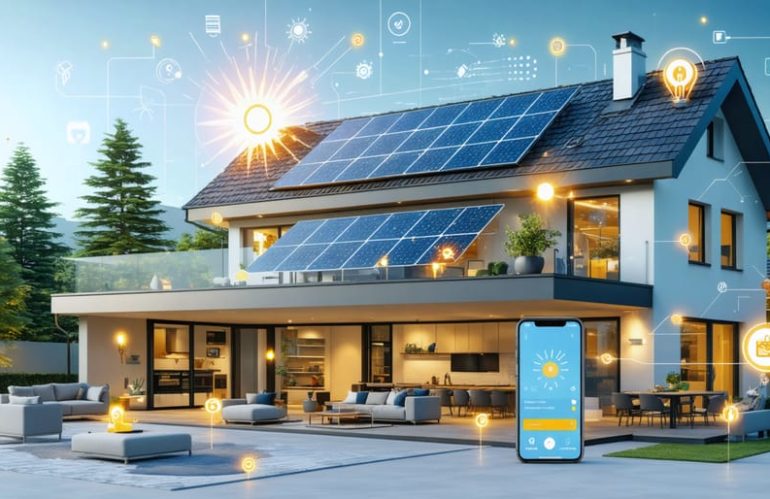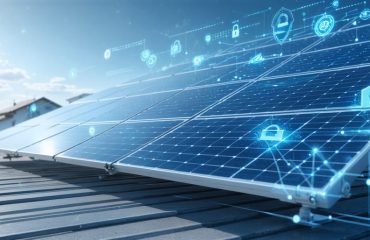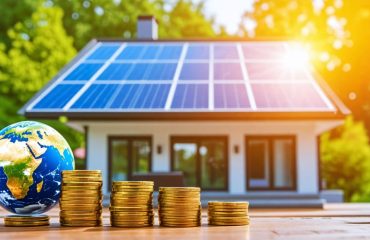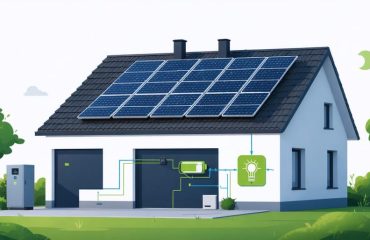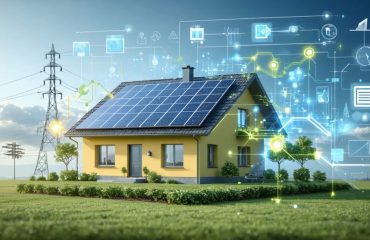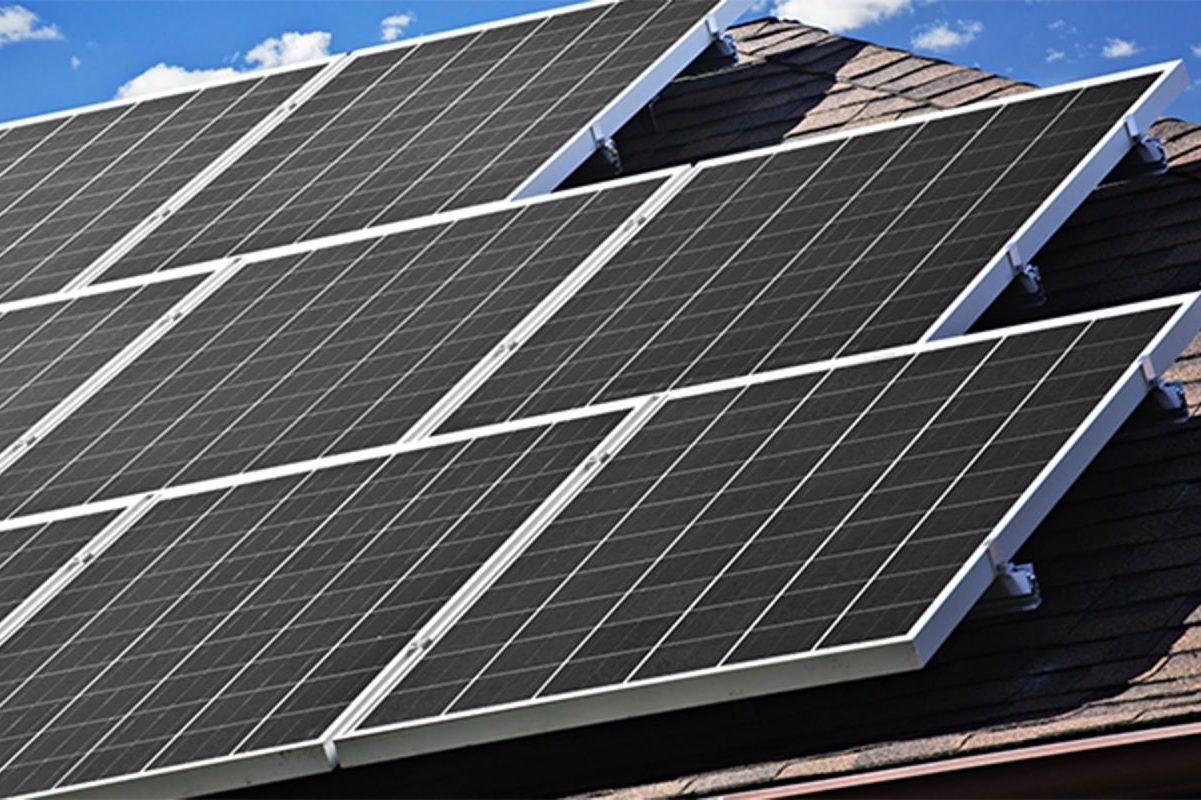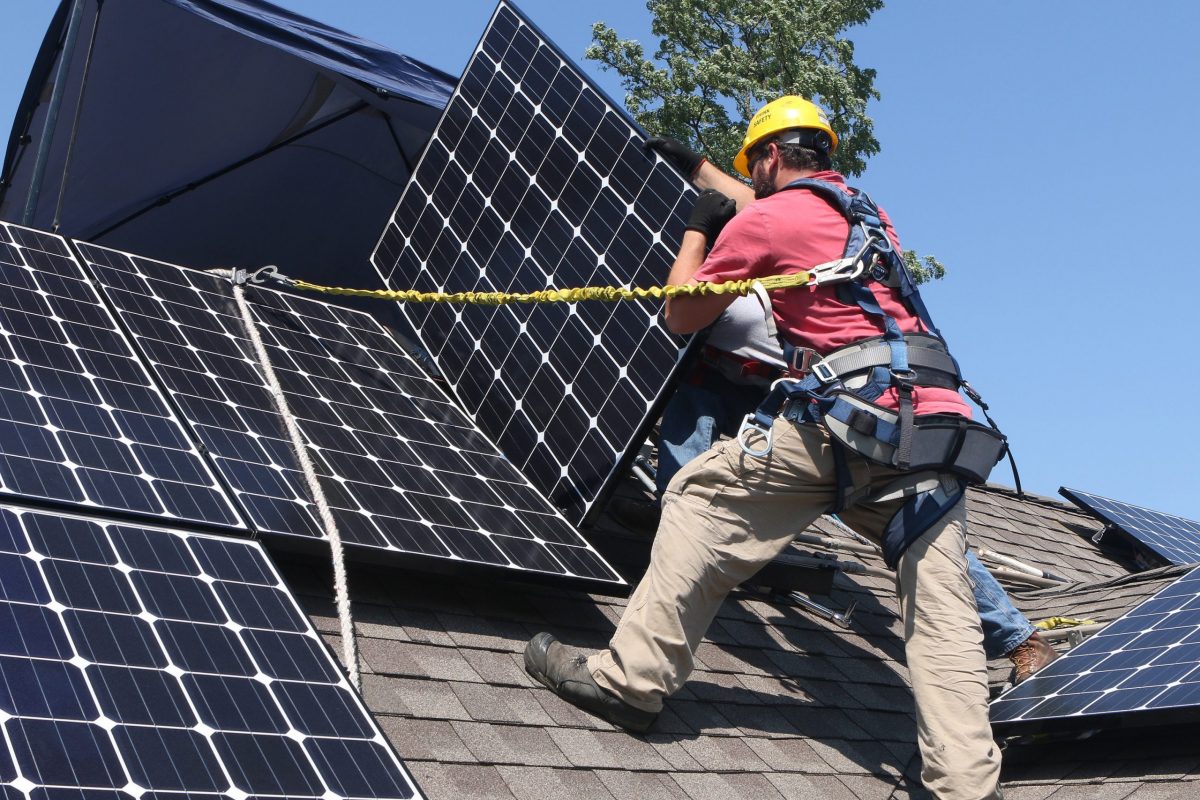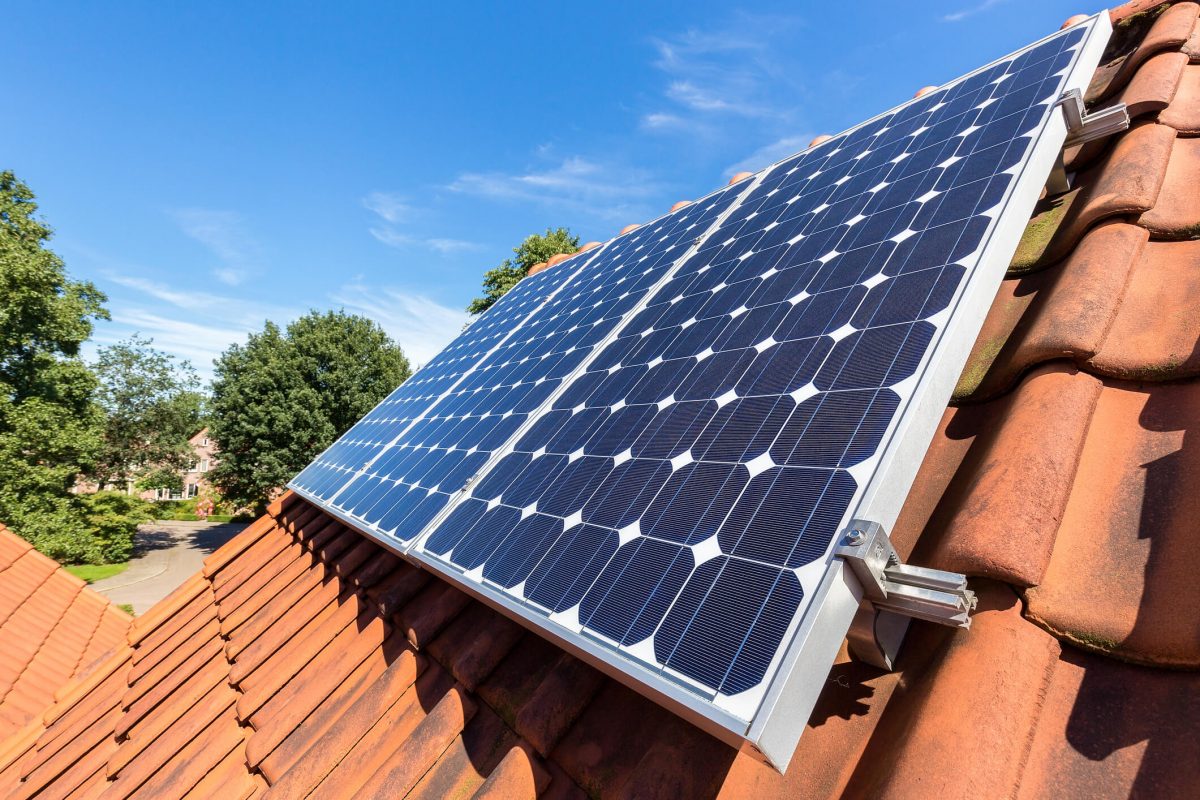Transform your home into an energy-smart powerhouse by integrating solar technology with automated systems. Beyond basic residential solar system basics, modern integration connects your panels with smart thermostats, battery storage, and home energy monitoring systems to maximize efficiency. Smart algorithms now automatically adjust your home’s energy consumption based on solar production, weather forecasts, and peak utility rates—potentially doubling your solar investment’s value. By synchronizing your solar setup with smart home devices, you gain precise control over when and how you use solar power, ensuring every ray of sunshine translates to maximum savings. This intelligent ecosystem doesn’t just reduce electricity bills; it creates a seamless, sustainable living environment that optimizes energy use without sacrificing comfort.
Why Connect Your Solar Panels to Home Automation?
Real-Time Energy Management
Modern solar energy management systems transform how homeowners interact with their solar installations through automated monitoring and optimization. These smart systems track energy production and consumption in real-time, providing instant insights through user-friendly mobile apps and web dashboards.
With automated management, your system can intelligently direct solar power to where it’s needed most. During peak sunlight hours, excess energy can be automatically stored in batteries or sent to high-consumption appliances. The system can also adjust based on weather forecasts, ensuring optimal energy use even on cloudy days.
Smart monitoring alerts you to any performance issues, helping maintain system efficiency and extend equipment life. You can track energy savings, monitor battery levels, and even receive suggestions for improving energy habits. Some systems integrate with smart home devices to automatically adjust thermostats, run appliances during peak solar production, and manage EV charging schedules.
This seamless automation not only maximizes your solar investment but also simplifies the entire experience of managing your home’s energy use, making clean energy truly effortless.
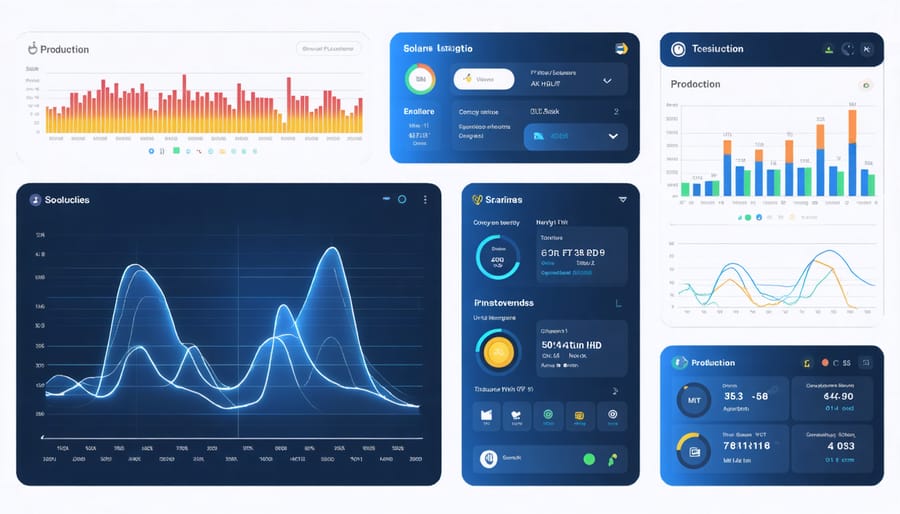
Cost Savings Through Smart Control
Smart control systems act as the brain of your solar setup, automatically managing energy flow to maximize savings. These intelligent systems monitor your home’s energy consumption patterns and adjust accordingly, ensuring you use solar power when it’s most abundant and grid power when rates are lowest.
For example, your system can automatically run high-energy appliances like washing machines and dishwashers during peak solar production hours. It can also store excess energy in batteries for later use or sell it back to the grid when prices are most favorable.
Many homeowners see their electricity bills drop by 20-30% just by implementing smart controls with their solar systems. The automation handles complex decisions about when to use, store, or sell solar power, eliminating the need for manual monitoring and adjustments.
These systems also provide real-time data about your energy usage and savings through user-friendly apps, helping you make informed decisions about your consumption habits. Over time, the system learns from your patterns and fine-tunes its operation, leading to even greater cost savings and efficiency.
Essential Components for Solar Integration
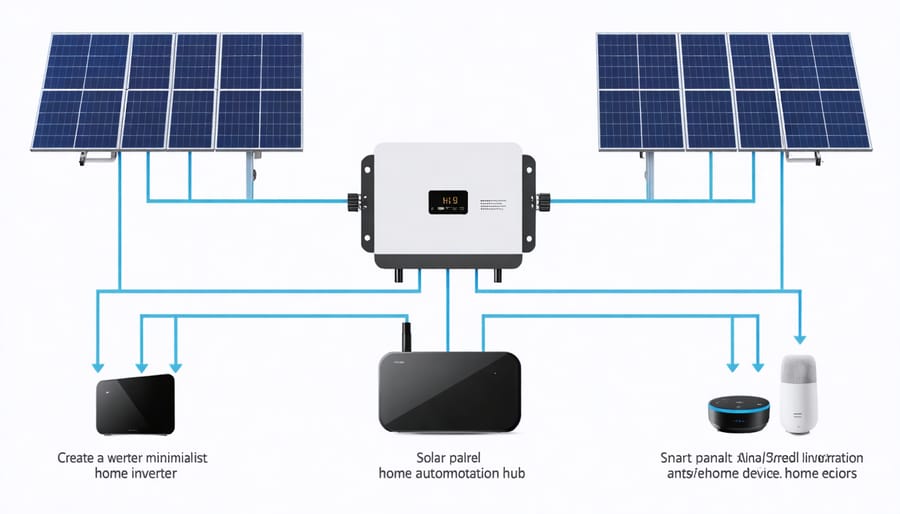
Smart Inverters and Monitoring Systems
Smart inverters and monitoring systems are the brains behind modern solar installations, working tirelessly to optimize your energy production and consumption. These intelligent devices convert DC power from your solar panels into usable AC electricity while providing real-time insights into your system’s performance.
Modern smart inverters come equipped with built-in WiFi capabilities, allowing you to track your solar production through user-friendly mobile apps. This connectivity enables you to monitor energy generation, consumption patterns, and system health from anywhere. Advanced features like battery monitoring and storage integration help you make the most of your solar investment by ensuring optimal energy management.
These systems also include automated features that adjust power flow based on your household’s needs. During peak sunlight hours, smart inverters can direct excess energy to battery storage or feed it back to the grid. When clouds roll in or during evening hours, the system automatically switches to stored power or grid electricity, ensuring seamless operation.
What makes these components truly “smart” is their ability to learn from your usage patterns and adapt accordingly. They can predict weather impacts on solar production, optimize energy storage timing, and even send maintenance alerts before problems arise. This intelligence translates into greater energy independence and reduced utility bills for homeowners.
Control Hubs and Mobile Apps
Modern solar systems put control right at your fingertips through intuitive mobile apps and smart home hubs. These user-friendly interfaces allow you to monitor your solar production, energy consumption, and battery storage levels in real-time from anywhere. Many leading solar manufacturers offer their own dedicated apps that provide detailed insights and control options.
These apps typically display easy-to-understand visualizations of your energy flow, including how much power your panels are generating, what your home is currently consuming, and whether you’re drawing from or storing energy in your batteries. You can track historical data to understand your energy patterns and make informed decisions about usage.
Smart home hubs like Amazon Alexa, Google Home, and Apple HomeKit can integrate with your solar system, allowing you to control your energy usage through voice commands or automated routines. For example, you can program your system to automatically run high-energy appliances during peak solar production hours or receive notifications when your batteries are fully charged.
Many control systems also offer features like weather forecasting to help optimize your energy usage based on expected solar production. Some apps even gamify energy savings, setting challenges and goals to help you maximize your system’s efficiency while minimizing grid dependence.
For peace of mind, these platforms typically include alert systems that notify you of any issues with your solar setup, ensuring you can address problems promptly and maintain optimal performance.
Setting Up Your Smart Solar System
Compatibility Check
Before integrating solar power with your home’s existing systems, it’s essential to perform a thorough compatibility check. Start by reviewing your current electrical panel’s capacity and condition. Most modern panels can accommodate solar integration, but older panels may need an upgrade to handle the additional power flow.
Next, assess your roof’s condition and orientation. South-facing roofs typically offer optimal sun exposure, but east and west-facing surfaces can also work effectively. Your roof should be in good condition and have enough structural integrity to support solar panels.
Consider your current home automation setup. Many modern smart home systems are designed to work seamlessly with solar installations, but it’s worth confirming compatibility with your specific devices. Look for systems that support energy monitoring and automated power management features.
Don’t forget to check local regulations and HOA requirements. Some areas have specific guidelines about solar installations, including panel placement and system specifications. Working with a certified solar installer can help ensure all compatibility requirements are met while maximizing your system’s efficiency.
Programming Smart Routines
Smart scheduling is the key to maximizing your solar system’s potential. By programming your home’s energy usage around peak solar production hours, you can significantly reduce your reliance on grid power and lower your utility bills.
Start by setting your major appliances to run during daylight hours when your panels are generating the most power. For example, schedule your dishwasher, washing machine, and dryer to operate between 10 AM and 2 PM, when solar production typically peaks. Many smart home systems can automatically adjust these schedules based on weather forecasts, ensuring optimal energy usage even on cloudy days.
Create automated responses for your home’s systems based on solar production levels. When excess solar power is available, your smart home can automatically pre-cool your house, heat your water tank, or charge home batteries. Conversely, when solar production is low, your system can reduce power consumption by dimming lights, adjusting thermostats, or postponing non-essential appliance usage.
Consider programming seasonal routines that account for changing daylight hours. Summer schedules might start earlier and run later, while winter routines concentrate energy usage during shorter daylight periods. Many modern solar monitoring systems can integrate with home automation platforms to provide real-time adjustments based on current conditions.
Remember to review and adjust your routines periodically to ensure they align with your household’s changing needs and energy consumption patterns.
Safety and Backup Features
Modern solar systems come equipped with multiple layers of safety features to protect your home and family. Rapid shutdown systems automatically deactivate solar panels during emergencies, allowing first responders to work safely. Smart monitoring systems continuously track system performance and can alert you to potential issues before they become problems.
Backup power options are essential for maintaining energy security. While traditional solar systems shut down during power outages (for grid safety), adding a battery storage system enables your home to maintain power even when the grid is down. Many homeowners opt for a hybrid approach, combining solar panels with battery backup to ensure reliable power 24/7.
Ground fault protection and arc fault detection are built into quality solar installations, automatically shutting down the system if electrical issues are detected. Smart inverters also help regulate voltage and frequency, protecting your home’s electrical system and appliances.
For additional peace of mind, many solar systems now integrate with smart home security systems, providing real-time monitoring and instant notifications about system status and performance through user-friendly mobile apps.
Making the Most of Your Integrated System
Daily Optimization Strategies
To get the most from your solar-integrated home system, start by monitoring your energy usage patterns through your smart home dashboard. Schedule energy-intensive activities like running the dishwasher or charging electric vehicles during peak sunlight hours, typically between 10 AM and 2 PM.
Take advantage of smart thermostats by programming them to pre-cool your home while solar production is high, reducing the need for grid power during evening hours. Set up automated routines that adjust window blinds to maximize natural light and heat gain in winter while minimizing it in summer.
Keep your solar panels operating at peak efficiency by regularly checking their performance through your monitoring system. Many smart home systems can alert you when panel output drops, indicating potential issues like dust accumulation or shade from growing trees.
Use smart plugs and outlets to automatically power down non-essential devices during low solar production periods. Consider setting up “away” modes that minimize energy usage when you’re not home while ensuring essential systems remain operational.
Remember to regularly review your system’s performance data and adjust your routines seasonally. Winter may require shifting energy-intensive activities to midday, while summer allows for more flexible scheduling. Many homeowners find that simple adjustments to daily routines can increase their solar system’s efficiency by 15-20%.
Store excess solar energy in batteries if available, and program your system to draw from stored power during peak utility rate periods. This strategy can significantly reduce your electricity bills while maintaining a comfortable lifestyle.
Seasonal Adjustments
Getting the most from your solar integration system requires adjusting your approach throughout the year. During summer months, when sunlight is abundant, focus on maximizing energy storage and implementing cooling strategies that align with peak production hours. Consider programming your smart thermostats to pre-cool your home during high solar generation periods, typically between 10 AM and 2 PM.
Winter presents different challenges, but smart solar forecasting helps optimize your system’s performance even during shorter days. Adjust your automation schedules to run energy-intensive appliances during peak daylight hours, and program your heating system to store thermal energy when solar production is highest.
Spring and fall are ideal times to reassess and update your system settings. These transitional seasons often bring variable weather patterns, making it crucial to fine-tune your automation rules. Consider implementing seasonal presets that automatically adjust based on weather patterns and daylight hours.
Key seasonal adjustments include:
– Updating timer settings for outdoor lighting as daylight hours change
– Adjusting smart thermostat schedules to match seasonal energy production patterns
– Modifying appliance automation schedules based on seasonal peak production times
– Reviewing and updating battery storage parameters for seasonal weather patterns
Remember to clean your solar panels and check system components during season changes to maintain optimal performance year-round.
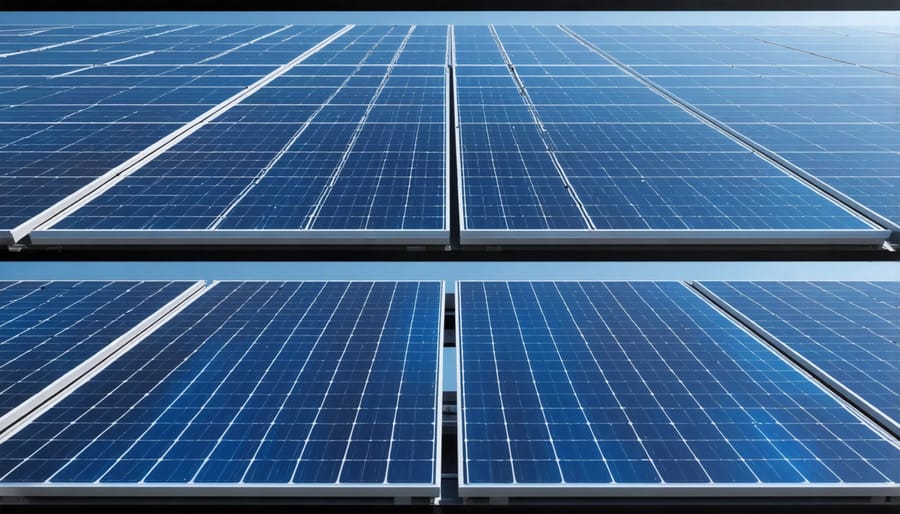
The integration of solar power with smart home technology represents a powerful step toward a more sustainable and efficient future. By combining solar panels with automated systems, homeowners can maximize their energy savings while contributing to environmental conservation. The benefits are clear: reduced utility bills, increased property value, and a smaller carbon footprint. Smart solar integration also provides unprecedented control over energy consumption, allowing households to optimize their power usage based on real-time data and automated scheduling.
As we’ve explored throughout this article, the technology is now more accessible and user-friendly than ever before. With various financing options available and continuing improvements in solar technology, there’s never been a better time to make the switch. The initial investment in solar integration can pay for itself through energy savings, tax incentives, and potential energy credits.
Taking action is straightforward: start by assessing your home’s solar potential, consulting with certified installers, and exploring smart home integration options that match your lifestyle. Remember that even small steps toward solar integration can lead to significant benefits over time. Whether you’re motivated by environmental concerns, energy independence, or financial savings, solar integration offers a practical solution that delivers on all fronts.
Make the smart choice for your home, your wallet, and our planet – embrace solar integration today and become part of the clean energy revolution.

